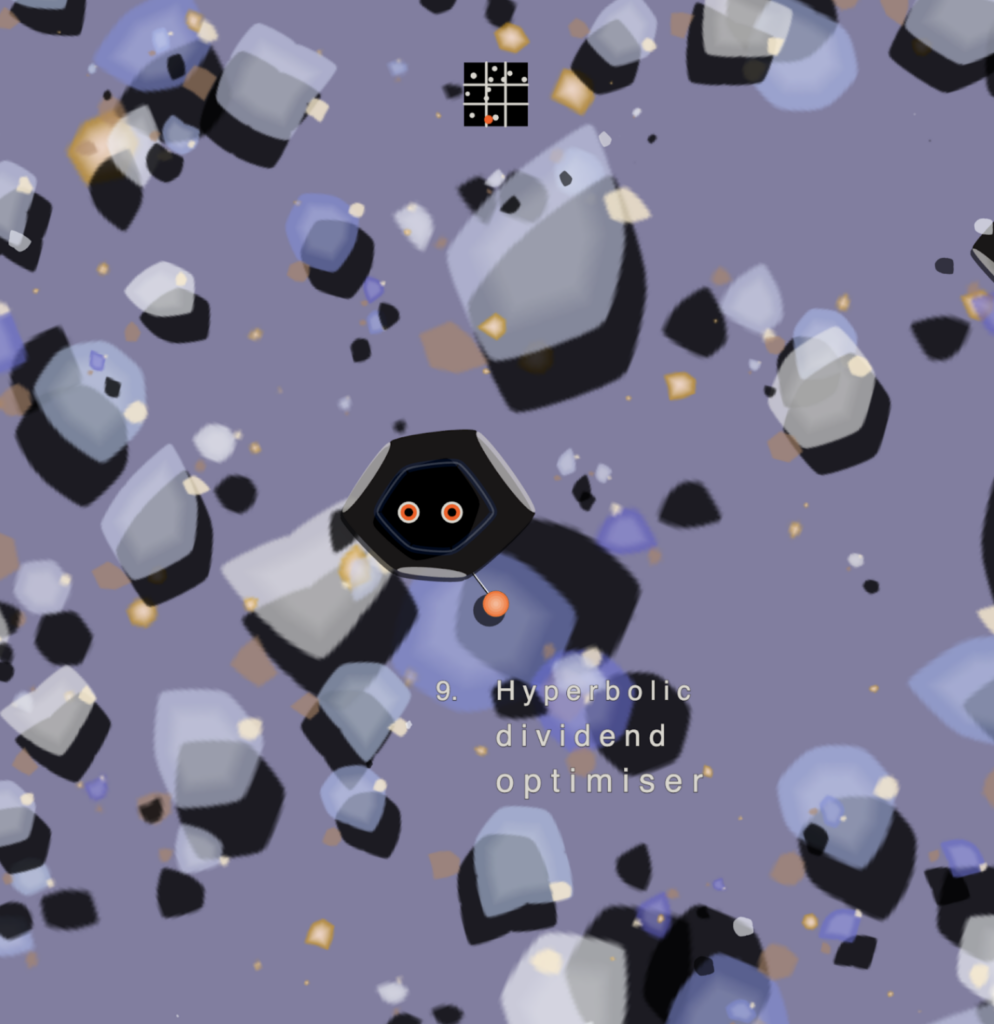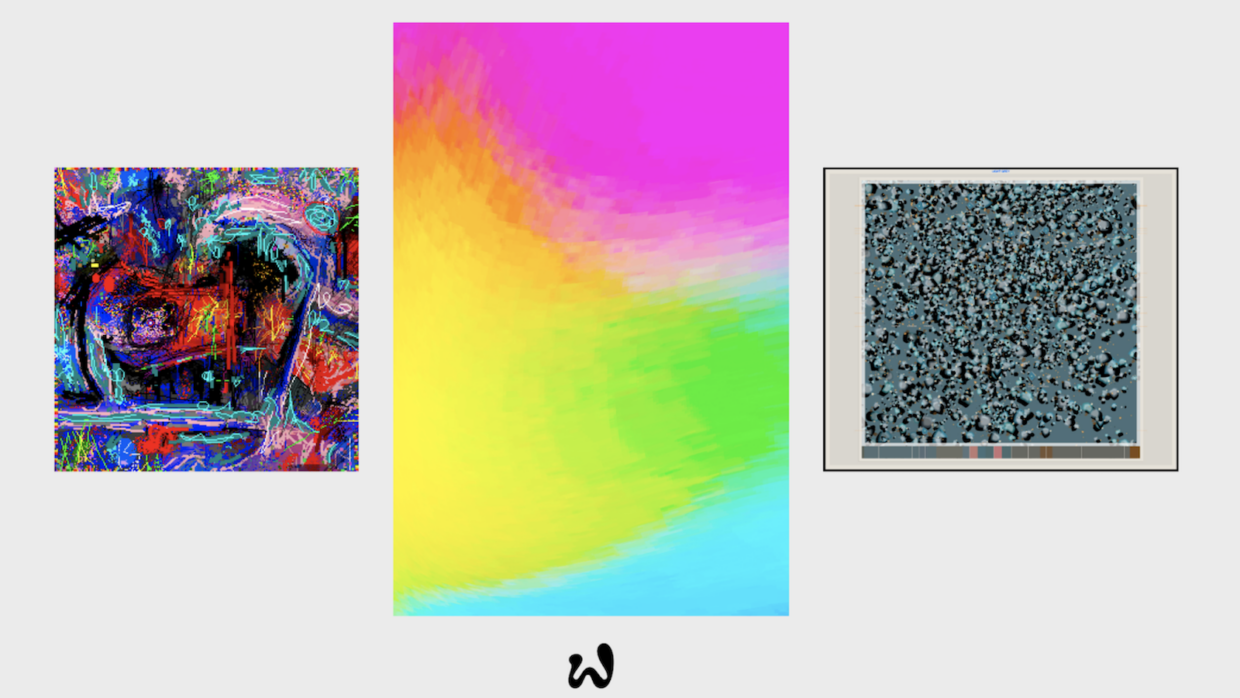|
Getting your Trinity Audio player ready...
|
Wildxyz, the hyper-curated experiential destination for digital artists and collectors, announced the launch of MATERIAL, Wildxyz’s inaugural group exhibition and sale, a showcase of Wild’s Artist in Residency program. MATERIAL comes to market as Wild celebrates one year as an organization. To date, Wild has forged partnerships with over 70 artists who have participated in three Seasons of Wild’s esteemed Artist in Residency program and launched 22 original collections on Wild.
Headlining MATERIAL is Montreal-based artist Figure31 (Loucas Braconnier) alongside contemporary artist, educator, and founder of Whistlegraph, Jeffrey Scudder, and Melbourne-based coder and generative artist Sten.
Spanning diverse domains from digital photography to contemporary and generative art, these three artists blend traditional and digital mediums to experiment with unconventional materials. Derived from a variety of content — from portraits to self-created coding tools to ancient texts — MATERIAL prompts viewers and visitors to contemplate what it means to create something new and how we value the continuous remixing, reimagining, and rebirth of ideas.
“Joining the effort behind MATERIAL contextualizes my work alongside the practices of my contemporaries,” said Figure31. “My work deals with the potential for digital images to be manipulated and transformed. The collection I’m presenting references a specific source, portraits from the United Nations Image Library, yet they establish a distance from it by leveraging different digital manipulations. These images invite viewers to reconsider the representation of power as an aesthetic experience.”

LLM by Sten
Figure31 presented select pieces from his exclusive collection, PROXY, at a three-day artist retreat in New Orleans with more than 70 members of Wild’s community. Printed on heavyweight backlit polyester archival paper, the works preview those included in MATERIAL.
“Creativity has always been about pushing boundaries and finding new mediums for expression, and with the digital age, the canvas has grown infinitely. ‘MATERIAL’ is more than just an exhibition; it’s a statement on how source materials have evolved from tangible elements to digital datasets, online resources, and beyond while continuing to serve as ideation to artists,” said Douglass, Founder and CEO of Wildxyz.
We spoke with all three artists about the importance of MATERIAL as well as the themes and concepts influencing their work.
Could you provide some insights into your background and how the concepts behind your work fit into the broader narrative of the exhibit, MATERIAL?
Figure31: The creative process is simple. I’m highlighting digital manipulations that are common to anyone working with a computer. There’s a strong history of artists making minimal statements with readily available tools, and I think I fit into this tradition. They become relevant because of the subject I applied to them and because I’ve repeated these manipulations so many times that have deviated from their original purpose. The nature of these manipulations has the effect of bringing the subject closer to us, but doing so blurs and, in this specific case, saturates it.
Discovering the UN Photo Library was a moment of intrigue for me. This archive provides documentation of an influential diplomatic institution. I’ve always been keen on exploring the narratives and public perceptions that certain images can shape. I’m originally a photographer, therefore I’m particularly sensitive to these concerns. Historically, portraiture was reserved for the elite, and artists had a crucial role in shaping the legacy and perception of those individuals. While portraiture today is banal, the essence of this representation remains significant. PROXY is an exploration of this intersection between historical significance and contemporary interpretation. It leverages computational techniques to abstract the source portraits.
Jeffrey: For my collection hell_ world, I ventured into a realm that is deeply personal and exploratory. Drawing inspiration from software I grew up using, I designed my own software environment– aesthetic.computer. This tool allowed me to combine generative brushes, instant console commands, and my own gestural input. The commands I’ve incorporated, like ‘rect,’ ‘line,’ and ‘smear,’ serve as foundational materials for my paintings. Their presentation in this collection is a testament to the harmony of manual gestures with algorithmic processes, emphasizing the symbiotic relationship between human creativity and technological precision.
Sten: I’ve used a very specific material as a starting point and expanded out from that. For “Little Lyell Machines,” my primary material was the history of a mining town deep in the western wilderness of Tasmania. After visiting this place, and seeing the remnants of mining left in the landscape, I was fascinated by the big swirl of companies, people, politics, and machinery that were part of a huge copper mine discovery, boom, and decline. Using code, I’ve built a system that takes in these fragments, these snippets of history, and creates a loosely connected story. The fragments of the story are scattered or hidden within a field of generative rubble which in itself has a beautiful diversity of arrangements and colors. A single algorithm creates multiple outcomes and narratives. Exhibiting this in MATERIAL is a testament to the way a seed of a story can grow and become something new, in a completely different medium, but still connected back to its source.

Painting by Jeffrey Scudder
Douglass, Founder and CEO of Wildxyz, mentioned that MATERIAL is not just an exhibition but a statement on the evolution of source materials in the digital age. How do you believe this exhibit contributes to the ongoing dialogue about the relationship between art and the changing nature of source materials?
Figure31: Artists have always referenced other artists through their work. It’s not a new thing, but it materializes differently in the digital age. By exploring, deconstructing, and reassembling the UN Portraits, my work in this exhibition exemplifies the limitless possibilities technology offers artists. Source materials are no longer static or confined; they can be repurposed, reimagined, and redefined. As a result, this raises intriguing questions about authenticity, originality, and reinterpretation. MATERIAL invites viewers, collectors, artists, and thinkers alike to question this multifaceted relationship between technology and art.
Jeffrey: MATERIAL, in my opinion, serves as a magnifying glass on the intricate dance between traditional artistry and digital innovation. As artists, our source materials are not just tools; they are extensions of our thought processes and imagination. By intertwining code with gesture and algorithm with emotion, this collection underscores the malleability of source materials in the hands of artists willing to push the boundaries. It invites the art community and audiences to engage in a dialogue that doesn’t just celebrate the evolution of source material but also provokes thoughts on how we define, interact with, and perceive creativity and originality in this rapidly shifting digital world. Transitioning between traditional and digital art has always been an exciting endeavor for me. It’s like having a conversation between two languages, where each brings its unique voice, grammar, and rhythm. Through my works in MATERIAL, I wish to convey that art isn’t bound by its medium. Instead, it thrives on the artist’s ability to adapt, remix, and reimagine.

Artwork by Figure31
Sten: When I started talking about Little Lyell Machines with Wild we envisioned this big serious story in a small and fun and interactive algorithm. The old toy View-Master was a reference point for me – a slide that contains multiple vignettes of information that you zoom in one by one. That’s made possible by thinking about the work as a machine, as a system for arranging material. My collection, “Little Lyell Machines,” speaks to the evolution of how adaptive and dynamic art and creativity have become. Source material is everywhere. We can take a physical history from a hundred years ago, or a personal memory from a decade ago, and transform it, iterate it, and give it new life. There is boundless potential in merging traditional narratives with the digital language and with the many interactive and immersive ways that different forms of digital art embrace and explore.
MATERIAL’s presale launches October 30, with a public mint opening on October 31 exclusively on wild.xyz/wild-exhibition-material/.



